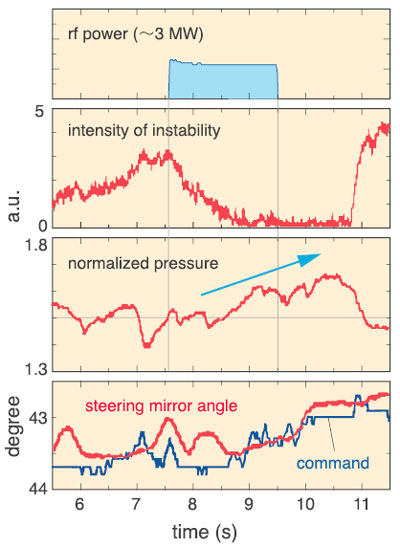In the International Thermonuclear Experimental Reactor (ITER) and in fusion reactors in general, a sustained burning plasma satisfying the self-ignition condition is required. In such devices, the stationary sustainment of high pressure (= temperature times density) plasma is mandatory. However, under such high pressure, instabilities that cause a localized decrease in plasma current may appear. Since instability decreases plasma pressure and degrades plasma performance, suppression of the instability has been an important research goal. Experiments in JT-60U demonstrated that this instability could be suppressed by driving localized current to the location of the instability with radio-frequency (rf) waves. These waves compensated for the decreased plasma current.
The next milestone after this demonstration was to identify (detect and trace) the instability location in real time and suppress the instability by injecting rf waves to the location. In JT-60U, a system to identify the instability location has been modified to reduce the calculation time. In addition, the rf wave injection system has been improved to reduce the response time of the steering mirror to direct the current drive to the instability location. By combining these system improvements, a sophisticated control system for automatic suppression of the instability has been developed (Fig. 2-1). Applying this control system to JT-60 experiments has successfully demonstrated suppression of instabilities and achievement of high-pressure plasma (Fig. 2-2). If used on ITER, instability suppression could be expected to sustain high-pressure plasma.
|

